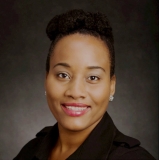|

Natalia Balyasnikova |
|

Patriann Smith
|
Dear ICIS Members,
The 50th annual TESOL convention is approaching! In a little
over 1 month, we will gather in Baltimore to share ideas and catch up
on the latest news. In preparation for the convention, this month’s
ICIS newsletter shines a spotlight on collaborations within our interest
section and innovative practices that our members are developing within
their classrooms.
Our first and second articles report on the work of ICIS with
intercultural organizations beyond TESOL. These articles are based on
the work of six of our members who represented our interest section at
the Society for Intercultural Training, Education and Research (SIETAR)
and The International Association for Languages and Intercultural
Communication (IALIC) conferences, showcasing their research. Together,
Heidi Faust, Ramin Yazdanpanah, Jane Dunphy, Maxi-Ann Campbell, Barbara
Lapornik, and Amy Alice Chastain contributed to a strong network of
individuals united by the passion and respect for other cultures in the
English language teaching profession. We are extremely proud to
highlight collaborative presentations such as these and encourage ICIS
members to continue this promising practice in TESOL and beyond.
My favourite part of our newsletter is the section in which
ICIS members share their teaching resources with our community. The
pieces featured in this section represent solid practice grounded in the
appreciation of languages and cultures that our learners bring to the
classroom and represent one of the greatest strengths of ICIS. In our
current issue, the authors provide insights into the ways in which
intercultural communication was fostered among students as well as
between students and teachers. To demonstrate how intercultural
communication can be developed between students and teachers, Quanisha
Charles shares two strategies that she used to increase Korean adults’
listening, reading, and writing skills while simultaneously
demonstrating the impact of English language on their Korean cultural
practices. Also focusing on adults, Lisa Currie demonstrates how the use
of Flat Stanley blogs lends itself well to helping students develop
cross-cultural understanding.
We hope that these articles will not only enrich your practice,
but also inspire you to share your lesson ideas with our readership.
What better way to celebrate all the accomplishments of our
members?
As we prepare for the TESOL convention in Baltimore, one of our
authors looks back to her experience as a graduate student convention
attendee in 2015. In her article, Elizabeth Yoshikawa presents insights
from her learning at the 2015 TESOL convention in Toronto through a
discussion of the benefits she gained by attending the Doctoral
Research Forum. Among the areas that Elizabeth highlights are
the importance of one’s research question, ways in which to manage
time, the strategy for writing a whole thesis, and the value of
relationship building. It is our hope that this article will speak to
those of you who attended the convention in Toronto and also help
first-time attendees as they plan their trip to Maryland.
Please mark your calendars for all the events hosted by our
ICIS conveniently listed in the Community Update section. Come support your fellow
ICIS members at their presentations and enjoy TESOL 2016 50th
Anniversary International Convention & English Language Expo!
Natalia and Patriann
Natalia Balyasnikova is a doctoral candidate in
language and literacy education at the University of British Columbia,
Vancouver, Canada. Originally from Russia, Natalia moved to Canada in
2013 to pursue her degree in TESL with a focus on intercultural
communication. Natalia writes about her life as a graduate student and a
newcomer to Canada in her blog.
Patriann Smith, PhD, is an assistant professor of
language, diversity, and literacy studies at Texas Tech University who
relies on tenets of intercultural communication in her cross-cultural
work to better understand how immigrant teachers to the United States
address their ideologies about nonstandardized languages and how these
ideologies affect literacy instruction. The intersections of Patriann’s
research can be better understood by taking a look at her recently
released coedited Handbook
of Research on Cross-Cultural Approaches to Language and Literacy
Development. | 
